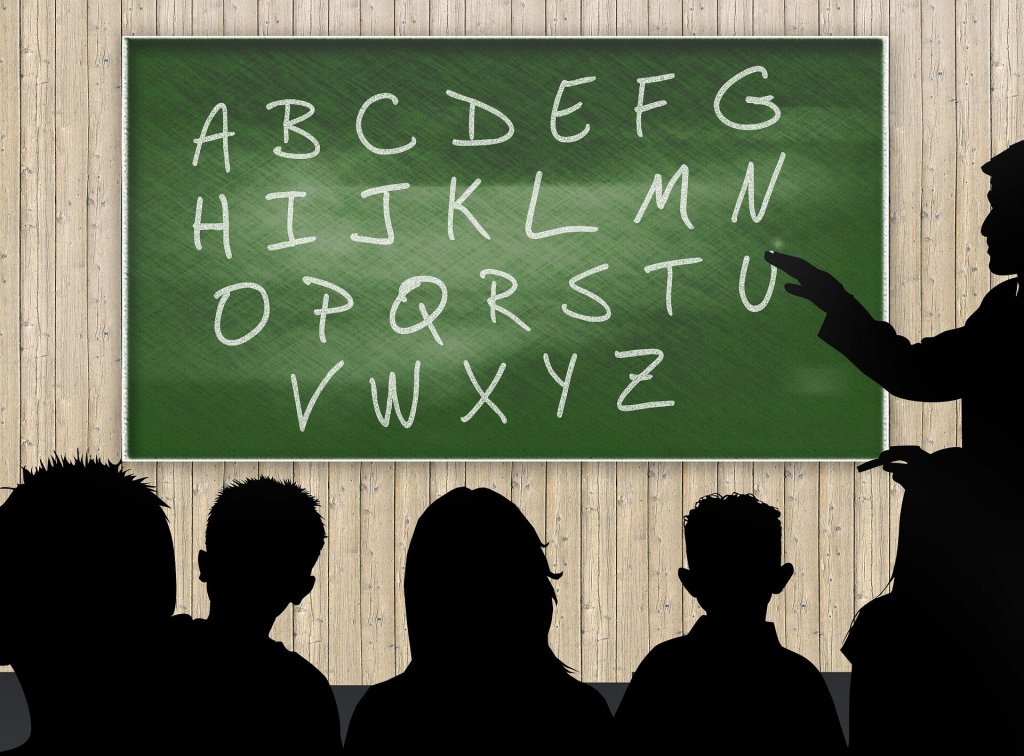“His Hearing Isn’t Really the Problem” and Other Teacher Misconceptions

April’s Audiology in the Schools column was entitled “I Won’t Need Hearing Aids When I Grow Up’ and Other Misconceptions: Informed Choice for Students”, which addressed the importance of a student understanding his or her own hearing loss and its implications. It’s once again Back to School time, so this month’s column will explore some of the misconceptions that classroom teachers have about hearing loss, and how to provide better information and strategies for them to support students effectively.
Every educational audiologist and teacher of the deaf and hard of hearing has had a conversation with a classroom teacher that went something like this “I don’t think his hearing is that bad, he always turns around when I call his name in the hallway. He definitely has academic challenges, but I don’t think it’s his hearing, I think it’s “… ADHD, ... a learning disability, ... a behavior disorder, … lack of focus, … daydreaming, … lack of motivation, etc.” Such a misconception about the nature of hearing loss has serious implications for the student, who needs the classroom teacher to understand the implications of his or her hearing loss and to implement the strategies and recommendations that have been provided. A teacher who does not understand the links between the student’s performance and behaviours, and his/her hearing loss, is likely to also be a teacher who is not diligent about, for example, FM system use.
There are generally two issues at play here – first, that many people, even teachers, have a conceptualization of hearing loss as “deaf” or “normal,” rather than as the continuum that we know it to be. To that classroom teacher, if a student responds consistently to his or her name being called, clearly he cannot be deaf, and therefore there can’t really be that much wrong with his or her hearing. Second, there is little understanding of the situational nature of hearing difficulties by the average person. I recently published an article for The Hearing Journal in which I commented that degree of hearing loss is not as useful a construct as it once was, it is no longer as predictive of outcomes given changes in technology, and it is too simplistic to capture a very complex problem. I proposed that we also consider the construct of degree of hearing access; that is, the degree of access to spoken language and communication that an individual with hearing loss has in any given situation or time. Evaluating degree of hearing access would need to consider 4 factors – auditory integrity of the individual with the hearing loss (everything that we know about how that person’s auditory system receives and processes sound), amplification integrity (how optimally and consistently the hearing technology provides access to auditory information), environmental variables (such as acoustics) and individual factors (personality, strategies, family variables, etc). Of course, there is no unit of measurement for such a construct, 2 of the variables (auditory integrity and individual factors) are beyond our ability to change, and it is value that would constantly change, even from minute to minute. However, conceptually, classroom teachers would understand an explanation that, for example, when the morning announcements come over the loudspeaker, the student with hearing loss has only 40% access to the auditory information, but if you repeat the information afterwards using the FM system, the student has 80% access to the message. If you then also jot down the important announcements on the blackboard, the student has 100% access. Telling a classroom teacher “he or she has a moderate hearing loss,” in addition to being open to a teacher’s interpretation of how serious “moderate” is, also implies something which is static and does not vary over time. While it is true that the moderate hearing loss does not vary from day to day, the student’s degree of hearing access likely varies wildly over the course of a school day, as he or she moves from the library to the gym to the classroom, where he or she uses the FM system or not, while interacting with teachers with a variety of speaking and teaching styles. Even within a single class, access to the teacher’s message might be excellent, while access to information from classmates might be extremely poor.
If we were to try to evaluate degree of hearing access for a given situation (such as math class), what might be potential sources of relevant information?

Information from Clinical Reports
The child’s clinical audiological report and audiogram contain a wealth of information to address the question “what can we expect this child to be able to hear (or not hear, or hear inconsistently) given the hearing loss and amplification that he/she has?” However, even teachers of the deaf and hard of hearing sometimes struggle with interpreting audiological information for parents, students and classroom teachers. For many years, educational audiologists have fielded the question “whatever happened to the aided audiogram?” since aided thresholds were an often-used tool to demonstrate the difference in access to spoken language when amplification was used. While aided thresholds have long been replaced in clinical audiology by measures which are far more precise, valid and efficient, the absence of aided thresholds has left teachers of the deaf and hard of hearing without an easy-to-interpret outcome measure to answer the question “what can I expect this child to be able to hear?” In fact, I answered this question so often that I eventually wrote an article about it for Volta Voices (Part One and Part Two), and for the website successforkidswithhearingloss.com to help parents and teachers understand how the real ear data conveyed on an SPLogram is related to speech perception.
Research at the National Centre for Audiology and at the Boystown National Research Hospital on the use of the Speech Intelligibility Index (SII) is another valuable to tool to help teachers and parents understand the degree to which the individual has access to the speech signal with or without amplification. Speech in noise test results also yield valuable information for educational audiologists and teachers of the deaf and hard of hearing to supplement the child’s audiogram (which represents hearing abilities under ideal acoustical conditions).
Functional Hearing Assessment
Functional hearing assessment in a classroom by an educational audiologist, using either direct assessment or observation, is not just an interesting thing to do, it is a critical component in evaluating degree of hearing access. There are a wealth of direct assessment tools available (the Functional Listening Evaluation, Functional Auditory Performance Indicators, the Early Listening Function Test, the Early Speech Perception Test, etc.) to evaluate speech perception under a variety of different conditions (without the FM system vs with the system, for example). There are also a wide variety of standardized and more information observational tools, checklists and questionnaires that can provide crucial information (the Teacher and Student Listening Inventory for Education, the Children’s Home Inventory for Listening Difficulty, the Self Assessment of Communication, etc.) that can provide more of a 360 degree picture, by including the observations of a variety of people who interact with the child every day.
Students spend 6-7 hours per day interacting with classroom teachers and other school staff, their importance to students with hearing loss cannot be overstated. If they are to be effective members of the team, however, they need the necessary knowledge and skills. There is nothing in this month’s column that is new to any of us; however, this cannot necessarily be said for administrators and government policy advisors. Ensuring that programs and resources (such as educational audiologists and teachers of the deaf and hard of hearing) continue to be in place in schools (and not falling victim to budget cuts) is an important part of our collective professional responsibility for advocacy.

